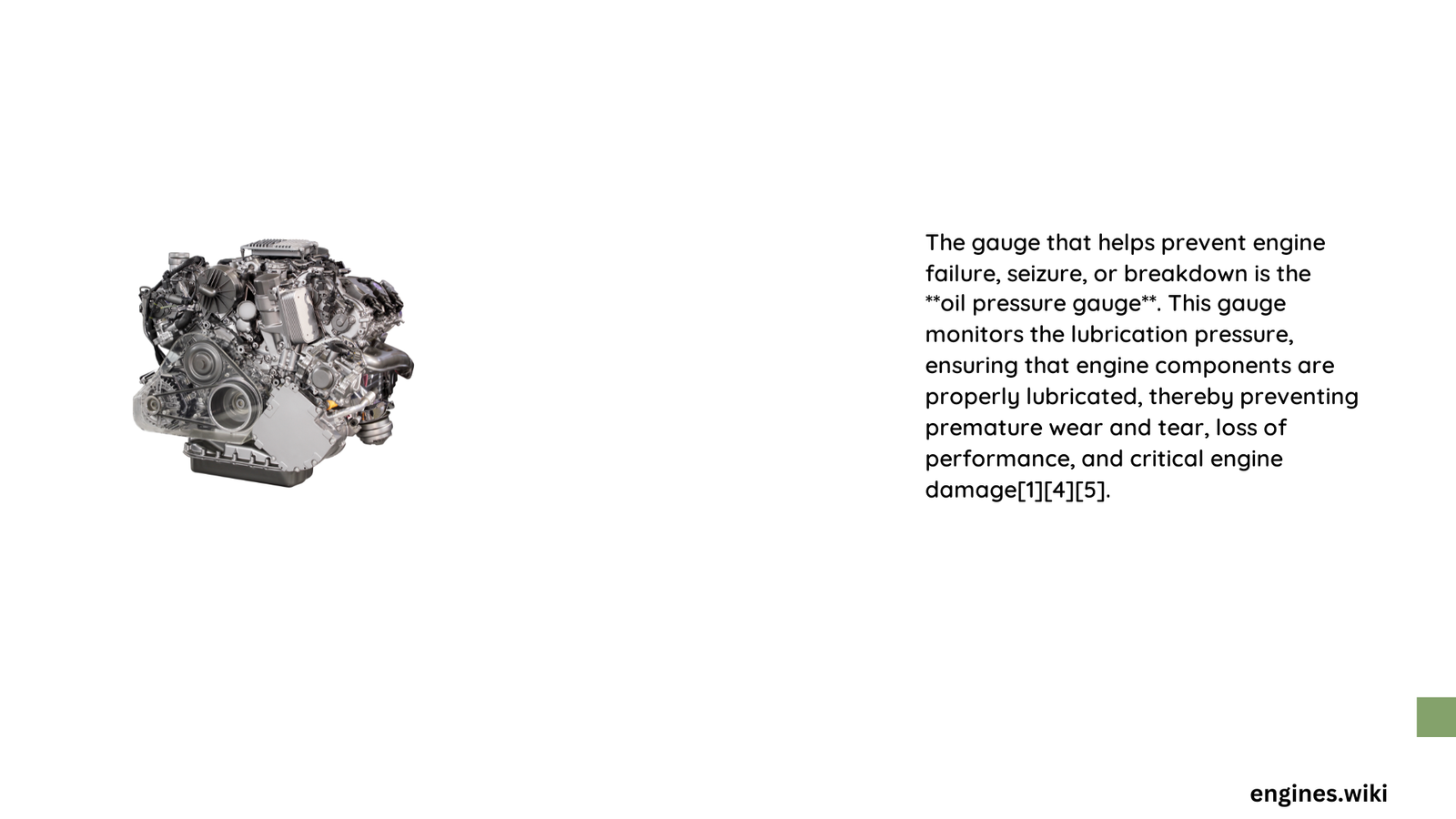Engine failure can strike unexpectedly, causing catastrophic damage and expensive repairs. Understanding which gauges help prevent engine seizure is crucial for vehicle owners and mechanics. By monitoring critical parameters through specialized gauges, you can detect potential issues before they escalate into complete engine breakdown, saving time, money, and preventing dangerous roadside emergencies.
What Are the Primary Gauges for Engine Failure Prevention?
Modern vehicles are equipped with several critical gauges that serve as early warning systems against potential engine failure. These diagnostic instruments provide real-time insights into the engine’s health and performance.
Why Is the Oil Pressure Gauge Critical?
The oil pressure gauge is arguably the most important indicator of potential engine seizure. Here’s why:
| Pressure Range | Risk Level | Recommended Action |
|---|---|---|
| 0-10 PSI | Extreme Risk | Immediately stop engine |
| 10-20 PSI | High Risk | Check oil levels urgently |
| 20-40 PSI | Normal Range | Continue monitoring |
| 40-60 PSI | Optimal | No immediate concern |
Key Oil Pressure Monitoring Strategies
- Check oil pressure before long trips
- Monitor gauge during different engine loads
- Look for sudden pressure drops
- Investigate consistent low-pressure readings
How Does the Engine Temperature Gauge Prevent Seizure?
Engine temperature directly impacts mechanical integrity. Overheating can cause:
- Cylinder wall warping
- Gasket failure
- Coolant system breakdown
- Lubrication system compromise
Temperature Threshold Warning Signs
- Normal Range: 195°F – 220°F
- Caution Zone: 220°F – 240°F
- Critical Overheating: Above 240°F
What Role Does the Exhaust Gas Temperature (EGT) Gauge Play?
The EGT gauge provides advanced warning of potential combustion and thermal stress issues:
- Diesel Engines: Normal range 900°F – 1,250°F
- Gasoline Engines: Normal range 800°F – 1,100°F
EGT Gauge Diagnostic Insights
- Indicates fuel mixture efficiency
- Reveals potential turbocharger problems
- Helps detect combustion system irregularities
Comprehensive Engine Health Monitoring Techniques
Effective engine protection requires:
- Regular gauge calibration
- Understanding baseline readings
- Immediate response to abnormal indicators
- Preventative maintenance scheduling
Technical Considerations for Gauge Reliability
- Choose high-quality, manufacturer-recommended gauges
- Ensure proper installation
- Regularly verify gauge accuracy
- Replace aging or malfunctioning instruments
Professional Maintenance Recommendations
- Annual professional engine diagnostic check
- Use high-quality lubricants
- Follow manufacturer’s maintenance schedule
- Train yourself to interpret gauge readings
Conclusion

Preventing engine failure requires proactive monitoring through critical gauges. The oil pressure, engine temperature, and exhaust gas temperature gauges serve as your primary defense against potential seizure and breakdown.
Expert Tips
- Never ignore persistent gauge warnings
- Understand your vehicle’s specific gauge ranges
- Invest in quality diagnostic tools
- Develop a routine maintenance mindset
References:
1. SAE International Automotive Standards
2. Society of Automotive Engineers Technical Papers
3. National Institute for Automotive Service Excellence
